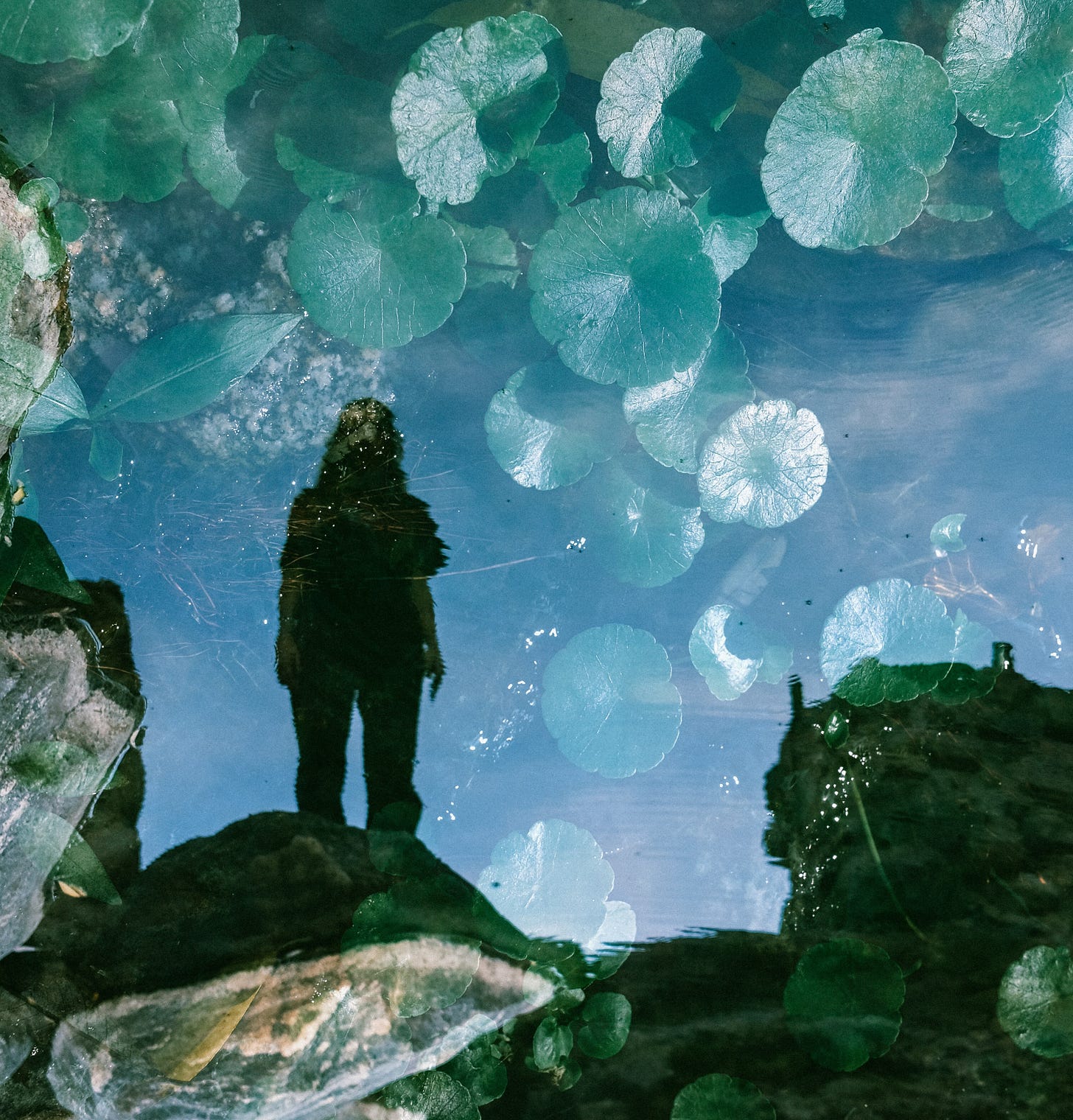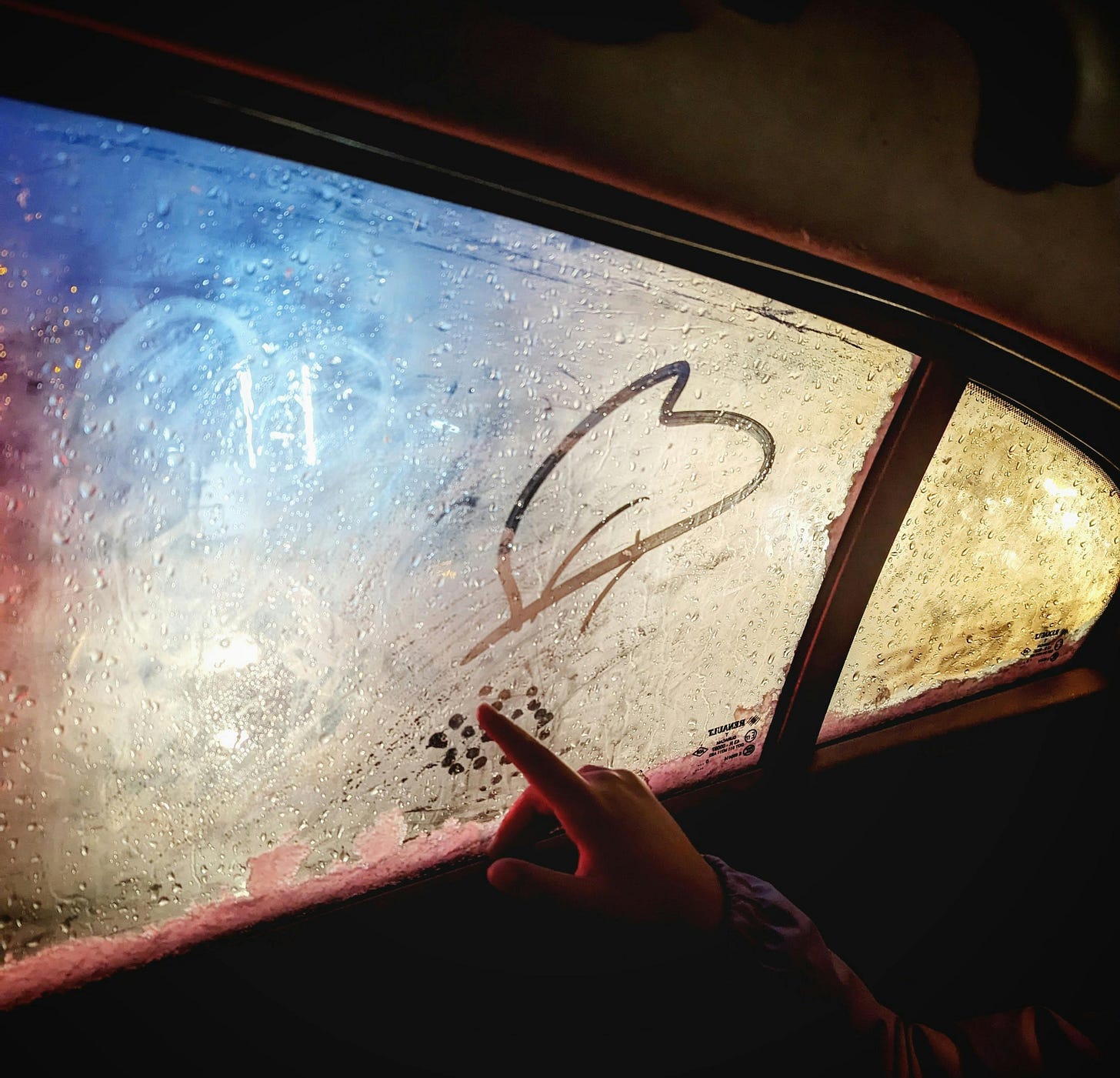In the here and the now, we’re embedded within intergenerational timelines that constrict, empower and shape us. In this space between the past and the future, we can practice ‘mind-fulness’, ‘heart-fulness’ and ‘care-fulness’. We can pause, we can shuffle, we can wriggle, re-orient and side-step. There are many movements, many ways to be and many things to do in the here and the now.
Often, we find pain and suffering in the here and now. It likely goes without saying, that we are living in times and places wrought with historical and current harms. In my day to day work in communities in colonial Australia, I’m finding ways to be with and respond to harm that I hope will contribute to kinder, more compassionate futures, some of which I likely won’t live to see. As part of that work, I’ve been paying attention to and co-cultivating forms of pause and response that try to respect the minutia of our interior lives, the macro of our external world and the places between. I am finding that together we can respond to harm, to suffering, to grief, to loss, to shock and terror in ways that deepen our relational capacities. I am witnessing how capacities we germinate and strengthen in private therapy spaces can go on to move us and our complex systems in influential ways.
We don’t often know exactly how the quality, texture, tone, shape or timing of our pause and response will ripple into the future (or past), but we know that it will. We know that our children are inheriting our responses, whatever they might be. We know that we ourselves have inherited so many deleterious and often unintended consequences of certain kinds of responses made in the past from people we know and those we don’t.
Many responses emerging from ‘discoveries’, ‘development’, ‘solutions’ and ‘progress’ are especially pernicious and continuing to sweep us into painful survival strategies and side-effects. It’s hard to choose an example from so many, and I may weave this thread further in the future, but for now let’s just use the example of our amazing medications. Medications have saved my life on occasion and yet, medications are also in many ways accomodating us to systemic suffering, rather than transforming it. They can provide some relief and stabilization, they can numb us to the broader sources of the very distress they are treating and they can bind us to the status-quo.
I’m thinking in particular of medications that children with neurocomplex1 minds are often prescribed. Prescriptions are made to radically alter the developing neurobiology of our little ones and to make their behaviours more tolerable for them and others in the environments they inhabit. Yet, very little prescription and breadcrumb resourcing are made available for the contexts these children occupy. An entrenched obsession with childrens ‘self-regulation’ accompanies limited curiosity about the contexts in which significant dysregulation arises. Teachers are left to attend to cohorts of children who carry unspoken, yet acted out, needs and experiences into classrooms. Our bodies and brains are buckling as our systems attempt to plug a sinking colonial ship with chemical coping strategies. For all the incredible research on the way our neurobiology, attachment strategies and minds are shaped by relationships of all kinds, we are yet to grow wide-spread learning environments that meaningfully integrate this knowledge. What kind of pause and response do we need to cultivate together to grapple with this complexity?
There is so much yet to learn together, practice, reflect on and amend in our pauses and responses as we live in the contexts we find ourselves in. For example, in my work with children, I’m learning about how much pausing to attend to sensorial care can matter and make a difference. Adaptions to noise, lighting, movement possibilities and the opportunity to be embedded within environments where multi-species accompaniment is possible (this week the crickets were a special happenstance pause) can provide deep relief for young ones. I imagine that it not only matters in the moment, but it may also matter to the future as these young ones find their own spaces to engage in a reciprocity of care for the environments which have nurtured them, down the track.
Across so many domains, we are living with patterns of pause and response which create problem to solution to more problems to more solutions to an unlimited set of compounding and intersecting problems. The meta-crisis2 is one term for this experience we are living through. If we really face the meta-crisis, we see that there is no answer at the back of the text book or ‘evidence-based’ modality that can deal with the complexity of the situation we are each and collectively within. Perhaps, in facing this, you may wish to pause and consider how you might now respond. Perhaps, you may wish to develop ways to respond differently than those in the past.
So let’s pause the problem-solution-problem making machine for a moment in the here and the now. Let’s ask:
What makes it possible to pause?
What do you notice in your experience when you have a felt-sense of pause?
How do your pauses and responses impact the care of individuals, families, communities and more-than-human kin?
What are your response-abilities?
How do you responsibly care for and tend to the harms you have inherited and sustained?
Which aspect of your abilities to respond might need compassionate attention and further learning?
What (perhaps slow and tiny) responses might you make towards increased abilities to act with and embody care and compassion?
What pauses and responses are within your reach?
A flow of pause and response within reach, is your beating heart. Regardless of your time or place, if you are a human reading this, your heart is reverberating within you and reaching outwards from you. Your heart is influencing the humans, animals and other life forms around you. I mean this in both a literal and metaphorical sense.
The HeartMath Institute illuminates the invisible magnetic field that radiates from each of our hearts (see image). This field of energy can be profoundly impacted by harm, as well as grown and mended with skillful care. There is much we can do to care for our own and the hearts around us.

For now, let’s ask:
What kind of care-ful response can you offer your heart in the here and the now?
What kind of care-ful response can you offer the hearts of those you care about in the here and the now?
Your heart may yet be somewhat of a mystery to you. There may be parts of your heart you had to turn away from. Perhaps your heart beats erratically and you don’t quite trust it’s wisdom. Yet, your heart is capable of survival under extraordinary pressures and pain.
Your heart is pausing and responding again and again and again.
Broken, weary, ecstatic, beating – we can tend heart-felt presence and join a rhythm of collective coherence, of pause and response, for a kinder future together.
Some of the people who influenced me in this writing I can name and some I cannot.
A small list:
Donna Haraway is credited with coining the term "response-ability"
Aline LaPierre explores and teaches the interconnectedness of the body’s multiple systems, challenging the traditional hierarchy of the minds superiority to the body
Rebecca Solnit suggests that the “positive consequences of our acts are not always immediately seen, directly knowable, or even measurable, and that pessimism and despair rest on an unwarranted confidence about what is going to happen next” in Hope in the Dark: Untold Histories, Wild Possibilities
Further Reading List:
Haraway, Donna J. Staying with the Trouble: Making Kin in the Chthulucene. Durham: Duke University Press, 2016.
LaPierre, Aline. NeuroAffective Touch: Healing the Relational Matrix. Berkeley, CA: North Atlantic Books, forthcoming.
Solnit, Rebecca. Hope in the Dark: Untold Histories, Wild Possibilities. 3rd ed. Chicago: Haymarket Books, 2016.
I want to acknowledge that my writing about transgenerational harm, care, and our relationships to place and more-than-human kin has been shaped by my settler ancestral lineage in Indigenous land. I recognize that Indigenous peoples have maintained sophisticated understandings of healing and relational care across generations for tens of thousands of years. I acknowledge Indigenous knowledge-wisdom systems that predate Western frameworks and are ongoing .
“Neurocomplexity” is a term coined by Lindsay Mackereth which serves as a way to expand our understanding of neurodivergence and its many layers
The Civilisation Research Institute describes the metacrisis in this way:
“Critically, metacrisis points to a deeper pattern that connects all risks and crises into a single coherent field: an ecosystem of crisis dynamics, with its own emergent properties. It points too towards the human experience, to the complexity and increasing confusion at the heart of how we all perceive, understand and operate across the field of converging risks. The metacrisis is a higher-order whole, with unique dynamics and unforeseen consequences. The metacrisis is both seen and unseen, taking place above and below the surface of what is visible and obvious”






